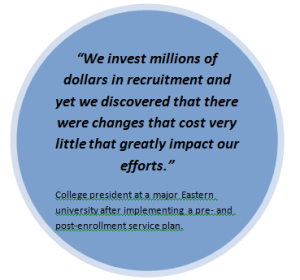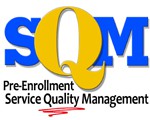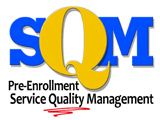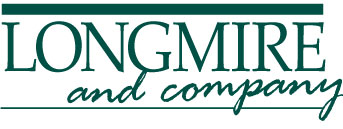During yield season we frequently hear this, “Our admissions team could benefit from a tune-up, reboot, transformation, or reinvigoration.”
Longmire and Company has answered that need by offering free video training tutorials on our website and YouTube channel aimed at making your counselors even better at their jobs. On our website you’ll find an ever growing list of admission counselor tutorials. Subscribe to our YouTube channel to get even more. There you’ll find tutorials, up-to-date market data, co-sponsored study reports and a wealth of actionable information to help you with your recruiting efforts.
 Check out our Counselor Training Tutorials. At the heart of our highly-successful Interactive Counselor Training Workshop is a proven model of communication that counselors tell us is transformative. The model is simple and highly effective. Adopt this straightforward method and you will see greater success in your recruitment efforts. Our ever-expanding tutorial menu includes sessions covering these high–impact topics from the popular workshops we conduct at college campuses across the country:
Check out our Counselor Training Tutorials. At the heart of our highly-successful Interactive Counselor Training Workshop is a proven model of communication that counselors tell us is transformative. The model is simple and highly effective. Adopt this straightforward method and you will see greater success in your recruitment efforts. Our ever-expanding tutorial menu includes sessions covering these high–impact topics from the popular workshops we conduct at college campuses across the country:
- Counselor Training Series Overview: Longmire and Company believes that the conversations between prospective students and the colleges they are considering can be much richer and more fruitful for both. Having rich conversations with prospective students provides you with a greater understanding of each student’s unique needs, preferences, motivations, and how they will make their college selection decision.
- Probing to Uncover Key Information about Prospective Students: The vast majority of counselors don’t cover a sufficient number of topics with a prospective student. We tell you why you must probe and how to do so effectively.
- Powerfully Presenting Your College’s Value Proposition: Here’s how you can define your value to students and parents in a truly meaningful way.
- Uncover and Break Through Objections and Concerns: We show you how to turn questions, concerns, objections and indifference into conversations that lead to enrollment.
- Take this Crucial Step Toward More Productive Conversations with Students: Get the student to take the next logical step on the path to enrolling.
- Learn to Differentiate Your College in a Compelling Way: Break out of this trap: The students and parents you’re talking to are hearing the exact same thing from every other college they are considering.
The Counselor Training Series is just the beginning of the valuable free video tools we are making available to you. You can also check out our YouTube channel for more tutorials, powerful data from national  co-sponsored studies and interviews with some of your peers.
co-sponsored studies and interviews with some of your peers.
If you’ve thought about helping your staff with professional development, now is the ideal time to train and motivate your staff. Email or call me if you are interested in how we can help. Continue the conversation on Twitter @LongmireCo. For more information about Longmire and Company and the tools we have to offer, click here. Be sure to subscribe to Versions of Conversion today so you can stay up-to-date.
 Bob Longmire is President of Longmire and Company, Inc. He is a recognized expert on the topic of how prospective students and parents form their college selection decisions – and how colleges can use that knowledge to grow and control their enrollment. He can be reached at (913) 492-1265, ext 709 or at blongmire@longmire-co.com. Connect with Bob at Linkedin/in/boblongmire.
Bob Longmire is President of Longmire and Company, Inc. He is a recognized expert on the topic of how prospective students and parents form their college selection decisions – and how colleges can use that knowledge to grow and control their enrollment. He can be reached at (913) 492-1265, ext 709 or at blongmire@longmire-co.com. Connect with Bob at Linkedin/in/boblongmire.
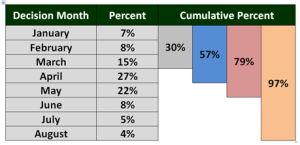

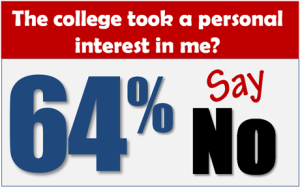
 Rick Montgomery is as an Enrollment Strategist at Longmire and Company. With over 20 years in higher education marketing, he brings an innovative and dynamic approach to helping colleges and universities meet their enrollment goals. Rick can be reached at 913/492.1265 x.708 or via email at rmontgomery@longmire-co.com.
Rick Montgomery is as an Enrollment Strategist at Longmire and Company. With over 20 years in higher education marketing, he brings an innovative and dynamic approach to helping colleges and universities meet their enrollment goals. Rick can be reached at 913/492.1265 x.708 or via email at rmontgomery@longmire-co.com.
